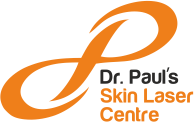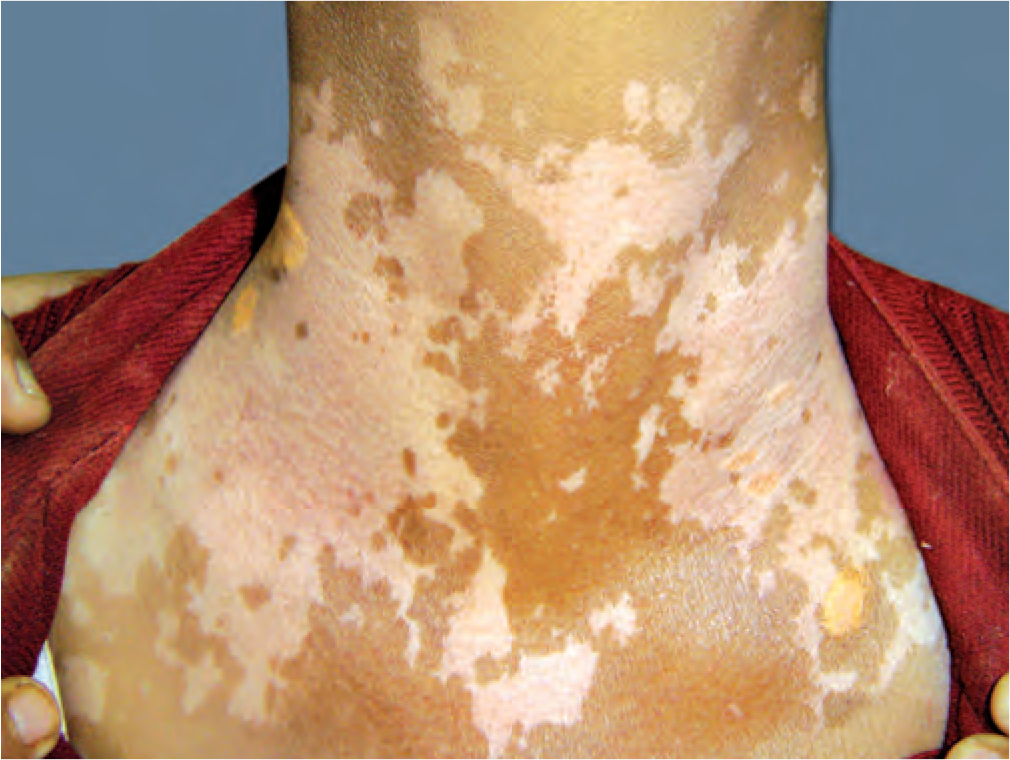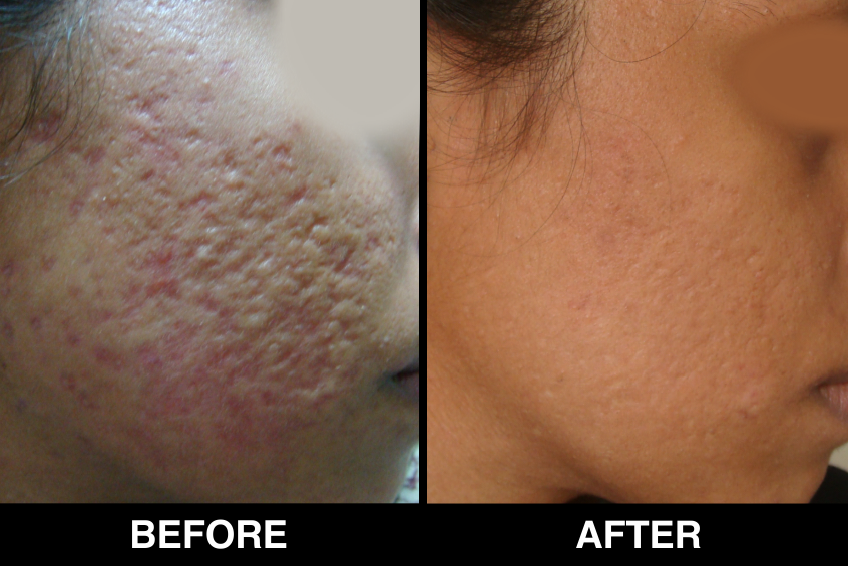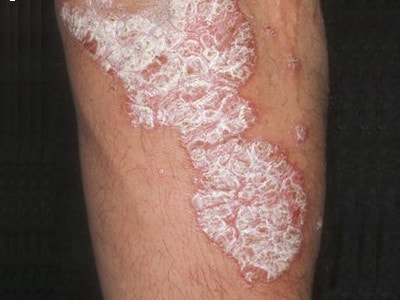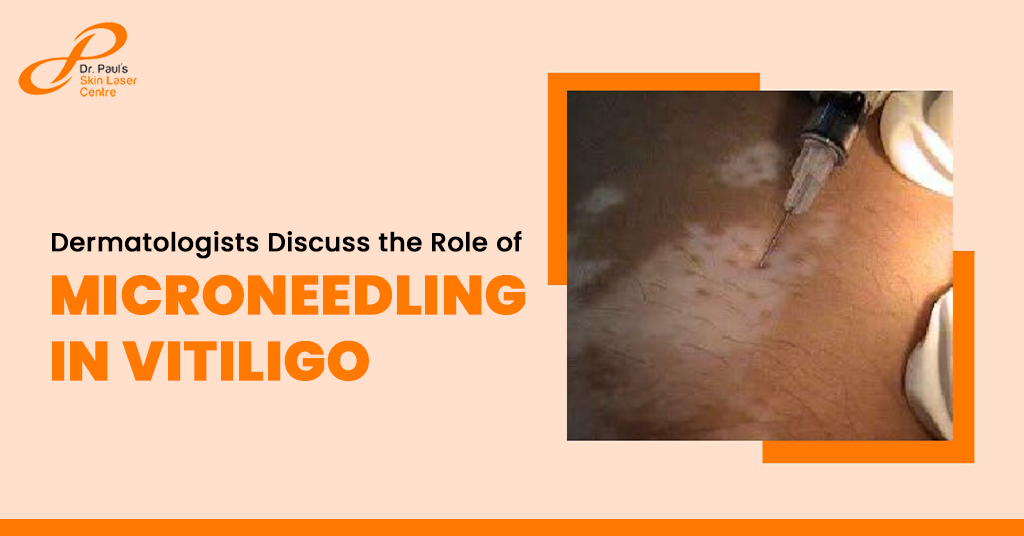Vitiligo, a condition characterized by white patches on the skin due to a loss of pigment-producing cells called melanocytes, can be a significant concern and a source of emotional distress.
While traditional treatments like phototherapy and topical corticosteroids exist, they can be time-consuming, have limited effectiveness, or come with unwanted side effects.
Microneedling, a minimally invasive procedure, has emerged as a potential gamechanger in the fight against vitiligo.
This article delves into the science behind microneedling, and explores its role as a standalone or combination therapy for vitiligo. We will also discuss its advantages and limitations and highlight the importance of consulting a dermatologist before undergoing this treatment.
Understanding Vitiligo
Vitiligo is an autoimmune disorder where the body’s immune system mistakenly attacks and destroys melanocytes.
Melanocytes are specialized cells in the skin’s basal layer that produce melanin, the pigment responsible for skin and hair color.
This loss of melanin leads to the development of well-defined, lighter patches on the skin, often symmetrical and affecting areas exposed to sunlight like the face, hands, arms, and feet.
Vitiligo can also affect mucous membranes inside the mouth and nose.
The exact cause of vitiligo remains unknown, though genetics, autoimmune factors, environmental triggers like stress or sunburn, and certain medical conditions are believed to play a role.
While not life-threatening, vitiligo can significantly impact a person’s quality of life, causing emotional distress and social anxiety.
Fortunately, several treatment options are available to help patients manage the condition and achieve repigmentation, the restoration of color to the affected areas.
What is Microneedling?
Microneedling, also known as collagen induction therapy, is a minimally invasive cosmetic procedure used for various skin concerns, including wrinkles, scars, and now, vitiligo.
The procedure involves using a handheld device with a sterile roller or pen containing fine needles.
These needles create controlled micro-punctures in the top layer of the skin (epidermis).
These tiny injuries trigger the body’s natural wound-healing response, leading to a cascade of beneficial effects:
Increased Growth Factors: The micro-injuries stimulate the production of growth factors, such as fibroblast growth factor (FGF) and vascular endothelial growth factor (VEGF). These growth factors play a crucial role in promoting cell proliferation, migration, and differentiation. In the context of vitiligo, this enhanced cellular activity can stimulate the growth and migration of melanocytes, potentially leading to repigmentation.
Enhanced Blood Flow: The needling process creates micro-channels in the skin, which can improve blood circulation to the treated area. This increased blood flow brings essential nutrients and oxygen to the skin cells, further promoting healing and potentially aiding in melanocyte function.
Improved Topical Treatment Absorption: Microneedling creates temporary channels in the stratum corneum, the outermost layer of the skin. This can significantly enhance the penetration of topical medications used to treat vitiligo, such as corticosteroids or tacrolimus. Improved absorption allows these medications to reach deeper layers of the skin and potentially have a more potent effect.
Why Microneedling for Vitiligo?
Studies investigating the use of microneedling for vitiligo treatment have shown promising results. The effectiveness of microneedling can be explored in two ways:
Monotherapy: Microneedling alone may lead to modest repigmentation, particularly in stable vitiligo patches where melanocyte activity is not completely absent. The stimulation of growth factors and improved blood flow triggered by microneedling can create a more favorable environment for melanocyte function and potentially lead to some degree of repigmentation.
Combination Therapy: When combined with topical medications like corticosteroids or tacrolimus, microneedling can significantly improve treatment efficacy. Topical corticosteroids suppress the immune response that attacks melanocytes, while tacrolimus inhibits calcineurin, a signaling molecule involved in the immune system’s response. By creating microchannels in the skin, microneedling enhances the penetration and delivery of these topical medications, allowing them to reach deeper layers and potentially have a more targeted effect on melanocytes. Studies have shown that combining microneedling with topical corticosteroids or tacrolimus can lead to faster and more significant repigmentation compared to using either treatment alone.
Advantages and Considerations of Microneedling for Vitiligo
Microneedling offers several advantages over traditional vitiligo treatments, making it an attractive option for many patients. Here’s a closer look at the pros and cons:
Advantages of Microneedling:
Minimally Invasive: Compared to surgical procedures for vitiligo, such as punch grafting or melanocyte transplantation, microneedling is a much gentler option. It requires minimal downtime and is generally well-tolerated by patients.
Relatively Painless: Safe for Most Skin Types: Microneedling can be a suitable option for a wider range of skin types compared to some other treatments like phototherapy, which can be less effective or have side effects on darker skin tones.
Cost-Effective: While the total cost can vary depending on the number of sessions needed and the dermatologist’s fees, microneedling can be a more affordable option compared to some long-term treatment regimens for vitiligo.
Potential for Improvement at Home: Microneedling devices for home use are becoming increasingly available. However, it’s crucial to consult a dermatologist before attempting at-home microneedling for vitiligo. They can advise on the appropriate needle depth, frequency of use, and potential risks associated with self-treatment.
Important Considerations:
Research is Ongoing: While studies have shown promising results, microneedling for vitiligo is still considered a relatively new treatment. More extensive research is needed to fully understand the long-term efficacy of microneedling and to establish optimal treatment protocols for different vitiligo presentations.
Not a Guaranteed Cure: It’s important to manage expectations. Microneedling results can vary significantly depending on the severity and type of vitiligo, as well as individual factors like skin type and overall health. Microneedling may not be effective for everyone, and complete repigmentation is not always achievable.
Consult a Certified Dermatologist: Before undergoing microneedling for vitiligo, it’s essential to consult a certified dermatologist experienced in treating the condition. They can assess your individual case, determine if microneedling is suitable for you, discuss potential risks and side effects, and create a personalized treatment plan that may combine microneedling with other therapies like phototherapy or topical medications to optimize results.
Optimizing Microneedling Treatment for Vitiligo
Several factors can influence the success of microneedling for vitiligo:
Needle Depth: The depth of the needles used during microneedling is crucial. Deeper needles can create a more significant stimulation response but also increase the risk of side effects. A dermatologist will determine the appropriate needle depth based on the severity and location of your vitiligo patches.
Frequency of Treatment: The optimal frequency of microneedling sessions for vitiligo can vary depending on individual factors. Generally, multiple sessions spaced several weeks apart are recommended. A dermatologist will create a personalized treatment plan based on your specific needs.
Combination Therapy: As discussed earlier, combining microneedling with topical corticosteroids or tacrolimus can significantly improve treatment efficacy. The dermatologist will determine the most appropriate medications and treatment regimen for your case.
Living With Vitiligo
Microneedling offers a promising new tool in the fight against vitiligo.
However, it’s important to remember that vitiligo management often requires a multifaceted approach. Here are some additional lifestyle factors that can be beneficial:
Sun Protection: Sun exposure can worsen vitiligo. Consistent use of sunscreen with an SPF of 30 or higher is crucial to protect the unaffected skin and prevent further depigmentation.
Stress Management: Stress is believed to be a trigger for vitiligo flare-ups. Practicing stress management techniques like yoga, meditation, or deep breathing can be helpful.
Support Groups: Connecting with others who understand the challenges of living with vitiligo can provide emotional support and a sense of community.
Conclusion
Microneedling offers a new avenue for vitiligo treatment.
While further research is needed to solidify its long-term efficacy and optimize treatment protocols, the potential to promote repigmentation, either alone or in combination with other therapies, makes it a beacon of hope for patients seeking to restore their skin’s natural color.
If you’re considering microneedling for vitiligo, consult an experienced dermatologist to discuss its suitability and achieving the best possible outcomes.
Remember, with a combination of appropriate treatment, sun protection, stress management, and support, you can manage vitiligo and improve your quality of life.
Book An Appointment






